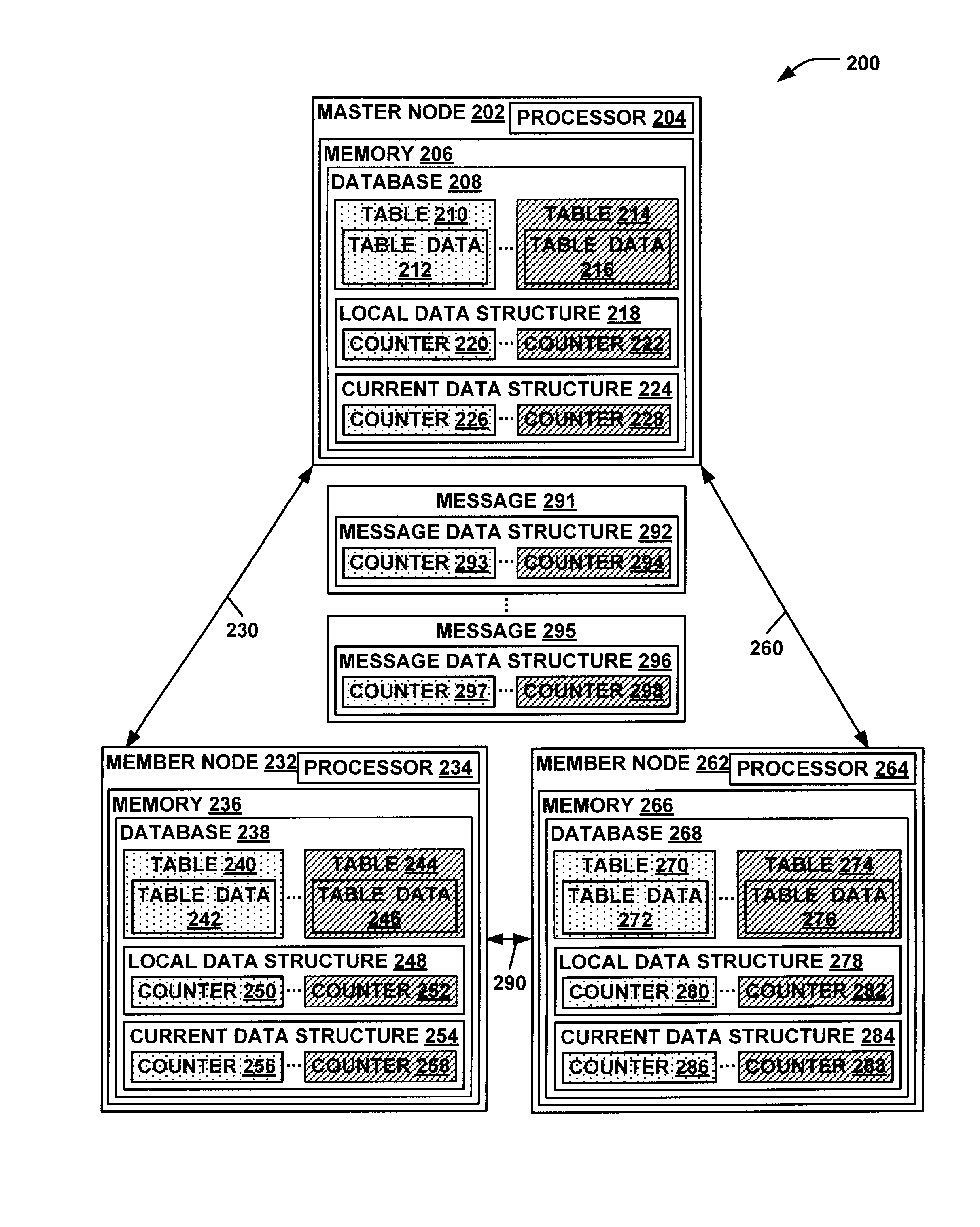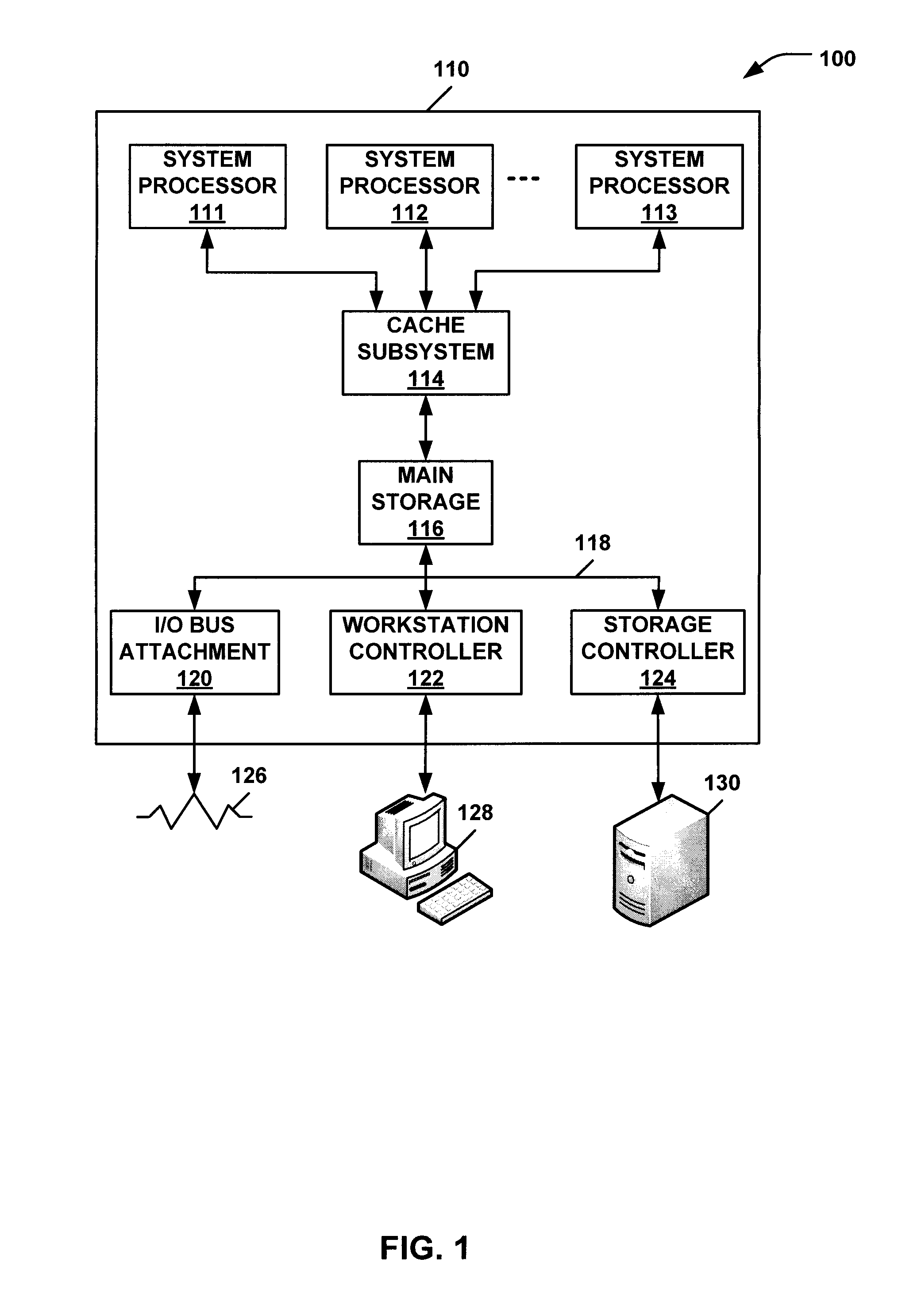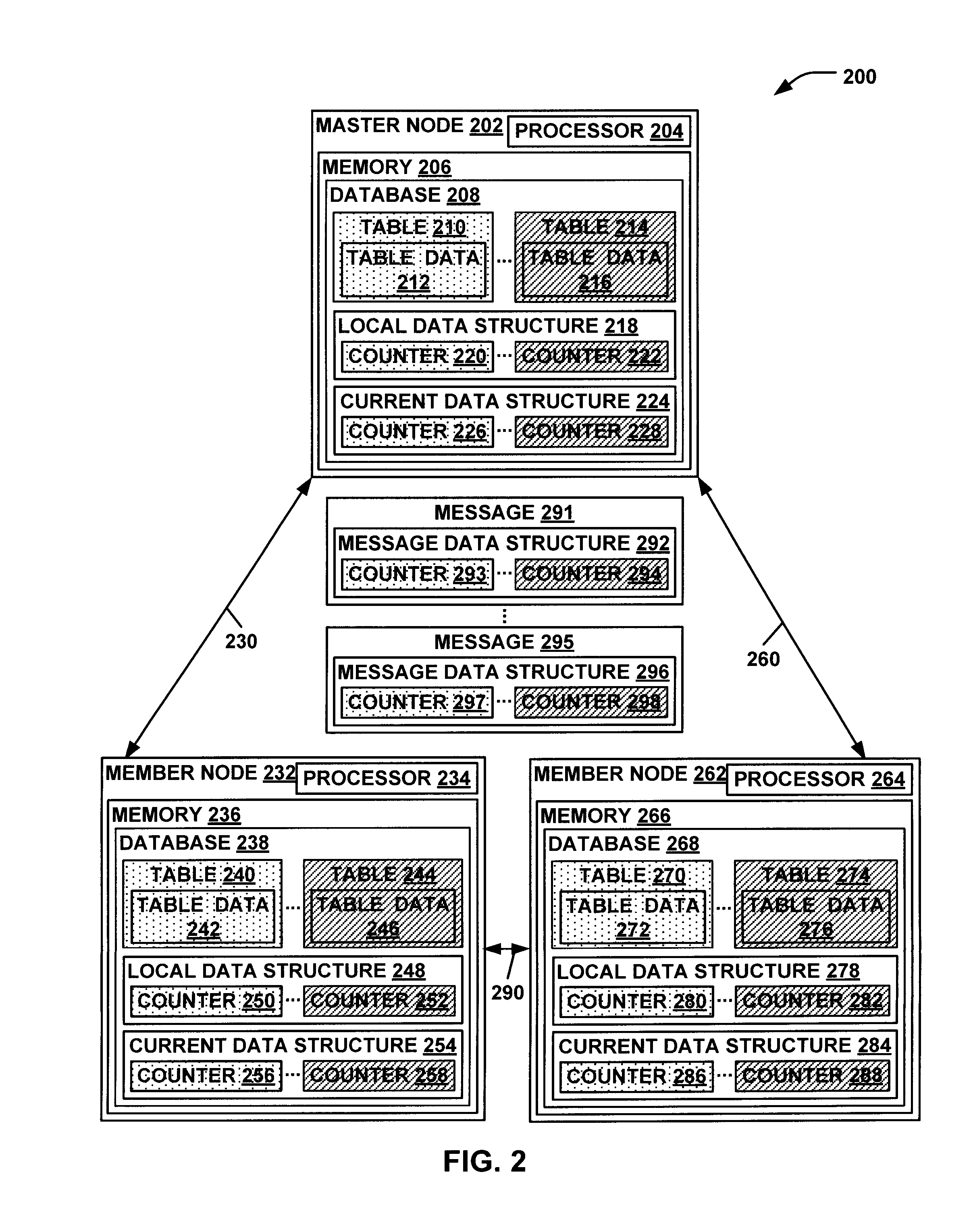Utilization of data structures to synchronize copies of a resource
a data structure and resource technology, applied in the field of synchronizing copies of resources, can solve the problems of bottlenecks and inefficiencies, certain copies may become unsynchronized and may need to be synchronized, and the potential for bottlenecks and inefficiencies is higher
- Summary
- Abstract
- Description
- Claims
- Application Information
AI Technical Summary
Benefits of technology
Problems solved by technology
Method used
Image
Examples
Embodiment Construction
[0013]A variety of data structures are described herein that may be utilized to synchronize copies of a resource that are distributed among nodes of a multi-node computing system. The resource may be a table (e.g., a database table), a file, a variable, or practically any entity that may change over a linear progression of virtual time with copies distributed among nodes of the multi-node computing system. The resource, or more specifically a master copy of the resource, may be stored in a master node of the multi-node computing system, and local copies of the resource may be stored in member nodes of the multi-node computing system. The data structures include message data structures, current data structures, and local data structures.
[0014]Over a linear progression of virtual time, copies of a resource may become unsynchronized as messages are processed in a multi-node computing system. For example, a master copy of the resource on a master node may process a message requesting an...
PUM
 Login to View More
Login to View More Abstract
Description
Claims
Application Information
 Login to View More
Login to View More - R&D
- Intellectual Property
- Life Sciences
- Materials
- Tech Scout
- Unparalleled Data Quality
- Higher Quality Content
- 60% Fewer Hallucinations
Browse by: Latest US Patents, China's latest patents, Technical Efficacy Thesaurus, Application Domain, Technology Topic, Popular Technical Reports.
© 2025 PatSnap. All rights reserved.Legal|Privacy policy|Modern Slavery Act Transparency Statement|Sitemap|About US| Contact US: help@patsnap.com



